What is in this leaflet
This leaflet answers some common questions about Sifrol ER.
It does not contain all the available information. It does not take the place of talking to your doctor or pharmacist.
All medicines have risks and benefits. Your doctor has weighed the risks of you taking Sifrol ER against the benefits it is expected to have for you.
If you have any concerns about taking this medicine, ask your doctor or pharmacist.
This leaflet was last updated on the date at the end of this leaflet. More recent information may be available. The latest Consumer Medicine Information is available from your pharmacist, doctor, or from www.medicines.org.au and may contain important information about the medicine and its use of which you should be aware.
Keep this leaflet with the medicine. You may need to read it again.
What Sifrol ER is used for
Sifrol ER is used to treat the symptoms of Parkinson's disease.
Parkinson's disease is a disease of the brain that affects body movement. The symptoms of Parkinson's disease are caused by a lack of dopamine, a naturally occurring chemical produced by certain brain cells. Dopamine binds to dopamine receptors and relays messages in the part of the brain that controls movement. When too little dopamine is produced, this results in Parkinson's disease. Sifrol ER works by having a similar effect as dopamine in the brain.
How Sifrol ER works
Sifrol ER contains the active ingredient pramipexole dihydrochloride monohydrate. It belongs to a group of medicines known as dopamine agonists, which bind to dopamine receptors.
Ask your doctor if you have any questions about why Sifrol ER has been prescribed for you. Your doctor may have prescribed it for another reason.
Sifrol ER is not addictive.
This medicine is available only with a doctor's prescription.
Before you take Sifrol ER
When you must not take it
Do not take Sifrol ER if you have an allergy to:
- any medicine containing pramipexole dihydrochloride monohydrate (the active ingredient) or
- any of the ingredients listed at the end of this leaflet.
Some of the symptoms of an allergic reaction may include:
- rash, itching or hives on the skin
- swelling of the face, lips, tongue or other parts of the body
- shortness of breath
- wheezing or difficulty breathing.
Do not give this medicine to a child or adolescent under the age of 18 years. Safety and effectiveness in children younger than 18 years have not been established.
Do not take this medicine after the expiry date printed on the pack or if the packaging is torn or shows signs of tampering. If it has expired or is damaged, return it to your pharmacist for disposal.
If you are not sure whether you should start taking this medicine, talk to your doctor.
Before you start to take it
Tell your doctor if you have allergies to any other medicines, foods, preservatives or dyes.
Tell your doctor if you have, or have had, any of the following medical conditions:
- kidney problems
- mental illnesses
- low blood pressure
- trouble controlling your muscles (dyskinesia).
Tell your doctor if you are pregnant, or plan to become pregnant. Your doctor can discuss with you the benefits and risks involved.
Tell your doctor if you are breastfeeding, or plan to breastfeed. Sifrol ER is not recommended during breastfeeding, as it may pass into breast milk and there is a possibility that your baby may be affected.
If you have not told your doctor or pharmacist about any of the above, tell them before you start taking Sifrol ER.
Taking other medicines
Tell your doctor or pharmacist if you are taking any other medicines, including any that you get without a prescription from your pharmacy, supermarket or health food shop.
Some medicines and Sifrol ER may interfere with each other. These include:
- levodopa, levodopa/carbidopa combination, or other medicines used to treat Parkinson's disease (e.g. amantadine)
- medicines used to treat high blood pressure or heart problems (e.g. digoxin, diltiazem, procainamide, quinidine, triamterene, verapamil, hydrochlorothiazide)
- medicines used to treat mental illness/psychoses
- metoclopramide, a medicine used to treat nausea and vomiting
- some medicines used to treat stomach or duodenal ulcers (e.g. cimetidine or ranitidine)
- quinine, a medicine used to prevent malaria
- some antibiotics (e.g. trimethoprim, cephalosporins, penicillins)
- indometacin, a medicine used to treat arthritis
- chlorpropamide, a medicine used to treat diabetes
- other medicines that can cause drowsiness or sleepiness (e.g. antihistamine or some cough and cold preparations).
These medicines may be affected by Sifrol ER or may affect how well it works. You may need different amounts of the medicine, or you may need to take different medicines.
Your doctor and pharmacist have more information on medicines to be careful with or avoid while taking Sifrol ER.
How to take Sifrol ER
Follow all directions given to you by your doctor or pharmacist carefully. They may differ from the information contained in this leaflet.
Sifrol ER is available in a number of tablet strengths. Your doctor or pharmacist will tell you how many tablets you will need to take each day. This depends on your condition and whether or not you are taking any other medicines.
If you do not understand the instructions on the label, ask your doctor or pharmacist for help.
How much to take
The usual dose is one tablet a day. Depending on how you respond to the treatment, your doctor may suggest a higher or lower dose.
If you are switching from the immediate-release Sifrol tablets:
Your doctor will base your dose of Sifrol ER tablets on the dose of the immediate-release Sifrol tablets you were taking.
Take your immediate-release Sifrol tablets as normal the day before you switch. Then take your extended-release Sifrol ER tablets the next morning and do not take any more of the immediate-release Sifrol tablets.
How to take it
Swallow the tablet whole with a full glass of water.
Do not chew, divide or crush Sifrol ER.
Sifrol ER tablets can be taken with or without food.
When to take it
Take Sifrol ER at about the same time each day. Taking it at the same time each day will have the best effect. It will also help you remember when to take it.
How long to take it
Continue taking Sifrol ER for as long as your doctor tells you.
This medicine helps to control your condition, but does not cure it. It is important to keep taking your medicine even if you feel well.
If you forget to take it
If it is almost time for your next dose, skip the dose you missed and take the next dose when you are meant to.
Otherwise, take it as soon as you remember, then go back to taking it as you would normally.
Do not take a double dose to make up for the dose that you have missed. This may increase the chance of you getting an unwanted side effect.
If you are not sure what to do, ask your doctor or pharmacist.
If you have trouble remembering to use your medicine, ask your pharmacist for some hints.
If you take too much (overdose)
Immediately telephone your doctor, pharmacist or Poisons Information Centre (telephone 13 11 26) for advice, or go to Emergency at your nearest hospital if you think that you or anyone else may have taken too much Sifrol ER. Do this even if there are no signs of discomfort or poisoning. You may need urgent medical attention.
If you take too much Sifrol ER you may have nausea, vomiting, abnormal uncontrolled movements, hallucinations, agitation and dizziness or light-headedness.
While you are taking Sifrol ER
Things you must do
Tell all doctors and pharmacists who are treating you that you are taking Sifrol ER.
Tell your doctor or pharmacist if you feel that Sifrol ER is not helping your condition.
Tell your doctor if, for any reason, you have not used Sifrol ER exactly as prescribed. Otherwise, your doctor may think that it was not effective and change your treatment unnecessarily.
Tell your doctor as soon as possible if there is any worsening of your condition.
If you or your family notices an increase in compulsive behaviour, seek immediate medical advice.
Tell your doctor if you notice parts of Sifrol ER tablets in your stool (faeces). This may look like whole tablets. Your doctor may need to assess your response to therapy.
Tell your doctor if you experience symptoms such as depression, apathy, anxiety, fatigue, sweating or pain after stopping or reducing your Sifrol ER treatment. If the problems persist for more than a few weeks, your doctor may need to adjust your treatment.
Tell your doctor if you develop an inability to keep your body and neck straight and upright. For example, you may experience abnormal posture such as forward bending of the head and neck, forward bending of the lower back or sidewards bending of the back.
Things you must not do
Do not give Sifrol ER to anyone else, even if they have the same condition as you.
Do not stop taking Sifrol ER or change the dose without checking with your doctor.
It is important not to suddenly stop taking your Sifrol ER tablets, unless advised to do so by your doctor, since your condition may worsen.
If your doctor asks you to stop taking Sifrol ER, the dose will normally need to be reduced gradually over several days.
Things to be careful of
Be careful driving or operating machinery until you know how Sifrol ER affects you.
This medicine may cause drowsiness, hallucinations and episodes of sudden onset of sleep in some people.
Make sure you know how you react to Sifrol ER before you engage in any activities where impaired alertness may put yourself or others at risk of serious injury.
If you experience excessive drowsiness or an episode of sudden onset of sleep (while performing daily activities), do not drive or perform any potentially dangerous activities, and contact your doctor.
Be careful when drinking alcohol while taking Sifrol ER. Combining Sifrol ER and alcohol can make you more drowsy or sleepy.
Be careful getting up from a sitting or lying position. You may feel dizzy or lightheaded while taking Sifrol ER, especially during the first few weeks of treatment. If you wish to stand up, you should do so slowly.
You should monitor your skin and see your doctor in case of any concerns. Patients with Parkinson's disease may have an increased risk of developing melanoma.
Side effects
Tell your doctor or pharmacist as soon as possible if you do not feel well while you are taking Sifrol ER.
Sifrol ER helps most people with Parkinson's disease, but it may have unwanted side effects in a few people. All medicines can have side effects. Sometimes they are serious, most of the time they are not. You may need medical treatment if you get some of the side effects.
Do not be alarmed by these lists of possible side effects. You may not experience any of them.
Ask your doctor or pharmacist to answer any questions you may have.
Tell your doctor if you notice any of the following and they worry you:
- feeling sick (nausea)
- vomiting
- constipation
- diarrhoea
- dry mouth
- drowsiness
- tiredness
- confusion or hallucinations (seeing, feeling or hearing things that are not there)
- restlessness
- dizziness
- headache
- light-headedness on standing up, especially when getting up from a sitting or lying position (hypotension)
- blurred vision
- swelling of hands, ankles or feet
- uncontrollable twitching, jerking or writhing movements
- difficulty sleeping or unusual dreams
- weight gain or loss
- loss or gain of sexual drive
- forward bending of the head and neck.
Some of these side effects are more common at the start of treatment and lessen or disappear with time.
Tell your doctor immediately if you or your family notice any of the following side effects:
- loss of memory (amnesia)
- fainting
- signs of allergy such as rash or hives on the skin; swelling of the face, lips, tongue or other parts of the body; wheezing or difficulty breathing
- excessive sleepiness or sudden onset of sleep during normal daily activities
- compulsive behaviour such as gambling, hypersexuality, shopping, eating, medication use and repetitive purposeless activities
- mental illness causing severe suspiciousness (paranoia)
- shortness of breath or tightness in the chest
- shortness of breath, swelling of the feet or legs due to fluid build-up (heart failure).
These are serious side effects. You may need urgent medical attention or hospitalisation. These side effects are rare.
Tell your doctor if you notice anything else that is making you feel unwell. Other side effects not listed above may also occur in some people.
After taking Sifrol ER
Storage
Keep Sifrol ER in the pack until it is time to take it. If you take the tablets out of the pack they may not keep well.
Keep Sifrol ER in a cool dry place where the temperature stays below 30°C.
Do not store Sifrol ER or any other medicine in the bathroom or near a sink. Do not leave it in the car or on window sills. Heat and dampness can destroy some medicines.
Keep Sifrol ER where young children cannot reach it. A locked cupboard at least one-and-a-half metres above the ground is a good place to store medicines.
Disposal
If your doctor tells you to stop taking this medicine or the expiry date has passed, ask your pharmacist what to do with any medicine that is left over.
Product description
What it looks like
Sifrol ER is the brand name of your medicine.
Sifrol ER 0.375 mg extended-release tablets are white to off-white, round, biconvex, bevel-edged tablets, with 'P1' on one side and BI company symbol on the other.
Sifrol ER 0.75 mg extended-release tablets are white to off-white, round, biconvex, bevel-edged tablets, with 'P2' on one side and BI company symbol on the other.
Sifrol ER 1.5 mg extended-release tablets are white to off-white, oval, biconvex, tablets, with 'P3' on one side and BI company symbol on the other.
Sifrol ER 2.25 mg extended-release tablets are white to off-white, oval, biconvex tablets with 'P12' on one side and BI company symbol on the other.
Sifrol ER 3 mg extended-release tablets are white to off-white, oval, biconvex, tablets, with 'P4' on one side and BI company symbol on the other.
Sifrol ER 3.75 mg extended-release tablets are white to off-white, oval, biconvex tablets with 'P13' on one face and BI company symbol on the other.
Sifrol ER 4.5 mg extended-release tablets are white to off-white, oval, biconvex, tablets, with 'P5' on one side and BI company symbol on the other.
Sifrol ER are available in blister packs of 30 extended-release tablets, except for Sifrol ER 0.375 mg and 0.75 mg which are also available in blister packs of 10 (sample pack)* extended-release tablets.
*Not currently distributed in Australia.
Ingredients
Each Sifrol ER 0.375 mg extended-release tablet contains 0.375 mg pramipexole dihydrochloride monohydrate.
Each Sifrol ER 0.75 mg extended-release tablet contains 0.75 mg pramipexole dihydrochloride monohydrate.
Each Sifrol ER 1.5 mg extended-release tablet contains 1.5 mg pramipexole dihydrochloride monohydrate.
Each Sifrol ER 2.25 mg extended-release tablet contains 2.25 mg pramipexole dihydrochloride monohydrate.
Each Sifrol ER 3 mg extended-release tablet contains 3 mg pramipexole dihydrochloride monohydrate.
Each Sifrol ER 3.75 mg extended-release tablet contains 3.75 mg pramipexole dihydrochloride monohydrate.
Each Sifrol ER 4.5 mg extended-release tablet contains 4.5 mg pramipexole dihydrochloride monohydrate.
Each Sifrol ER tablet also contains the following ingredients:
- hypromellose
- maize starch
- carbomer 941
- colloidal anhydrous silica
- magnesium stearate.
Supplier
Sifrol ER tablets are supplied in Australia by:
Boehringer Ingelheim Pty Limited
ABN 52 000 452 308
Sydney, Australia
www.boehringer-ingelheim.com.au
This Consumer Medicine Information was updated in September 2018.
® Sifrol is a registered trademark of Boehringer Ingelheim Pty Limited
© Boehringer Ingelheim Pty Limited 2018.
Australian Registration Numbers
Sifrol ER 0.375 mg extended-release tablets AUST R 158754
Sifrol ER 0.75 mg extended-release tablets AUST R 158755
Sifrol ER 1.5 mg extended-release tablets AUST R 158757
Sifrol ER 2.25 mg extended-release tablets AUST R 173901
Sifrol ER 3 mg extended-release tablets AUST R 158763
Sifrol ER 3.75 mg extended-release tablets AUST R 173921
Sifrol ER 4.5 mg extended-release tablets AUST R 158764
Published by MIMS November 2018

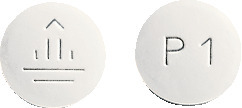
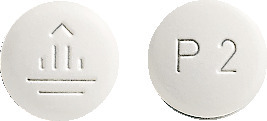
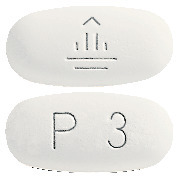
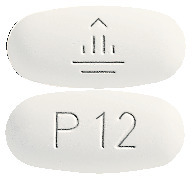
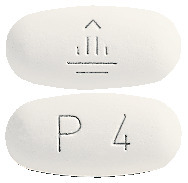
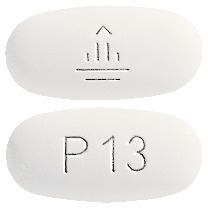
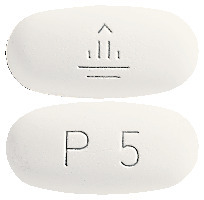
 If a further dose increase is necessary the daily dose should be increased by 0.75 mg at weekly intervals up to a maximum dose of 4.5 mg per day.
If a further dose increase is necessary the daily dose should be increased by 0.75 mg at weekly intervals up to a maximum dose of 4.5 mg per day.
 The patient's response should be evaluated after 3 months of treatment and the need for treatment continuation should be reconsidered. If treatment is interrupted for more than a few days it should be re-initiated by dose titration carried out as above.
The patient's response should be evaluated after 3 months of treatment and the need for treatment continuation should be reconsidered. If treatment is interrupted for more than a few days it should be re-initiated by dose titration carried out as above. Other events reported by 1% or more of patients treated with Sifrol but reported equally or more frequently in the placebo group were as follows.
Other events reported by 1% or more of patients treated with Sifrol but reported equally or more frequently in the placebo group were as follows. In general, the prevalence of nausea and fatigue was reduced with continued Sifrol therapy.
In general, the prevalence of nausea and fatigue was reduced with continued Sifrol therapy. In patients who had responded to 6-month open label treatment with Sifrol, the administration of placebo led to a rapid decline in their overall conditions and worsening of their RLS symptoms (Figure 1). At the end of the 12-week observation period, 85% of patients treated with placebo had failed treatment, compared to 21% treated with blinded pramipexole; the difference between the treatment groups was highly statistically significant (p < 0.0001).
In patients who had responded to 6-month open label treatment with Sifrol, the administration of placebo led to a rapid decline in their overall conditions and worsening of their RLS symptoms (Figure 1). At the end of the 12-week observation period, 85% of patients treated with placebo had failed treatment, compared to 21% treated with blinded pramipexole; the difference between the treatment groups was highly statistically significant (p < 0.0001).


